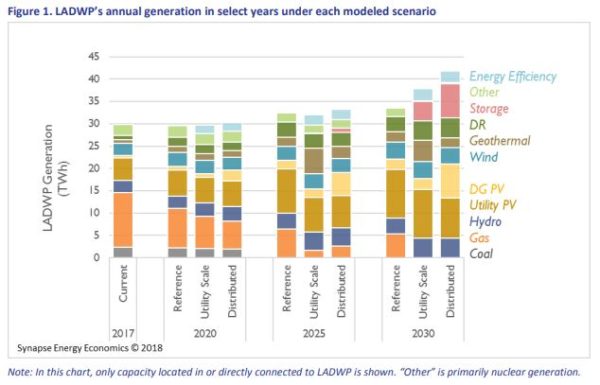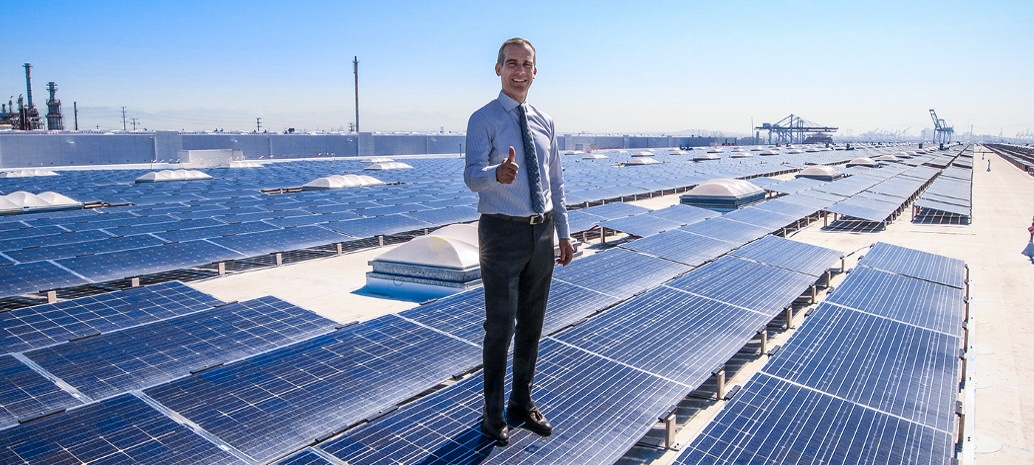A study, Clean Energy for Los Angeles: An analysis of a pathway for 100 percent renewable energy in Los Angeles by 2030 (pdf), has detailed a path for the Los Angeles Department of Water and Power (LADWP) to move to 100% renewable energy by 2030, as mandated by the City Council of Los Angeles.
The analysis, carried out by Synapse Energy Economics, purports that the savings of the systems in their models – even before the social benefits are taken into consideration – would end up paying for the systems by 2030.
The group modeled a distributed version and a utility-focused version. The former involves residents, living within the municipal utility’s borders, installing their own energy systems – and 6 GW of solar power being installed, of which 4 GW comprises distributed solar and 2 GW utility-scale.
The latter model also envisages 3.6 GW – with 1.4 GW comprising distributed solar and 2.2 GW utility-scale. The volume difference is mostly associated with differing capacity factors of distributed vs. utility solar.

Other differences between utility vs. distributed models include more behind-the-meter (distributed) energy storage. This behind-the-meter storage and solar, being paid for by end users, is the main reason the economics of the utility-scale model look so much better – it is a utility/taxpayer financial model, versus a true, all-in financial model.
Utility Scale case as modeled would cost $56 billion, and the Distributed case would cost $47 billion in NPV terms. As such, the Utility Scale case results in a cumulative NPV increase of $7 billion (14 percent) relative to the Reference Case, while the Distributed case results in a $2 billion decrease (4 percent), relative to the Reference case.
The cost of the Reference case was a net present value of $49 billion, using a 5% discount rate.
The model specifically made reference to the intermittent nature of wind and solar power by modeling hour by hour generation across the region – then crossing that generation with demand and energy storage to meet broader needs.
Food & Water Watch added,
These savings are even greater when we consider the high social costs associated with burning fossil fuels — costs that ratepayers may never see on their energy bills, but pay for dearly, nonetheless. These include everything from public health costs due to air pollution from power plants and water pollution from fracking, to the high cost of responding to disasters like wildfires and floods, to subsidies for fossil fuels.
The model excludes nuclear power as an option.
This content is protected by copyright and may not be reused. If you want to cooperate with us and would like to reuse some of our content, please contact: editors@pv-magazine.com.












What a cringe-worthy photo. I can almost hear the micro-fractures.
Invisible damage from walking on a solar panel